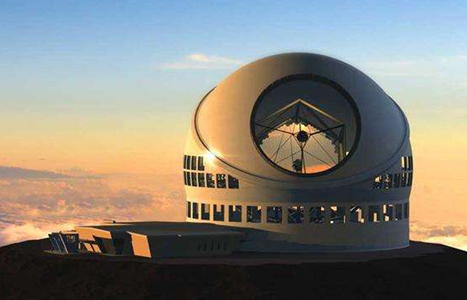Mauna Kea Observatories
USINFO | 2013-05-31 15:44

The Mauna Kea Observatories (MKO) are an independent collection of astronomical research facilities located on the summit of Mauna Kea on the Big Island of Hawai'i, USA. The facilities are located in a 500-acre (2.0 km2) special land use zone known as the "Astronomy Precinct", which is located in the Mauna Kea Science Reserve. The Astronomy Precinct was established in 1967 and is located on land protected by the Historical Preservation Act for its significance to Hawaiian culture.
The location is ideal because of its dark skies, good astronomical seeing, low humidity and position above most of the water vapor in the atmosphere, clean air, good weather and almost equatorial location.
The altitude and isolation in the middle of the Pacific Ocean makes Mauna Kea one of the best locations on earth for ground-based astronomy. It is an ideal location for submillimeter, infrared and optical observations. The seeing statistics show that Mauna Kea is the best site in terms of optical and infrared image quality—for example the CFHT site has a median seeing of 0.43 arcseconds.
Accommodations for research astronomers are located at the Onizuka Center for International Astronomy (often called Hale Pōhaku), 7 miles by unpaved steep road from the summit at 9300 feet (2835 m) above sea level. An adjacent visitor information station is located at 9200 feet (2775 m). The summit of Mauna Kea is so high that tourists are advised to stop at the visitor station for at least 30 minutes to acclimate to atmospheric conditions before continuing to the summit, and scientists often stay at Hale Pōhaku for 8 hours or more before spending a full night at observatories on the summit, with some telescopes requiring observers to spend one full night at Hale Pōhaku before working at the summit.
Share this page